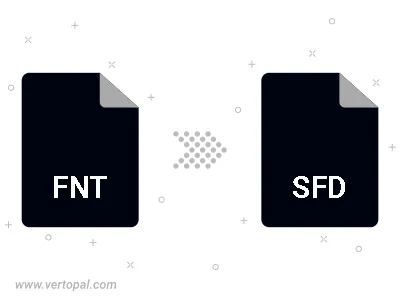Convert FNT to SFD
Convert FNT fonts to SFD format, edit and optimize fonts online and free.

The FNT file extension stands for Windows Font File and is used by the Windows operating system to store bitmap fonts. Introduced with Windows 3.x, FNT files contain graphical representations of characters, including their shapes, sizes, and positions within a bitmap grid. While they were essential for early Windows GUIs, FNT files have largely been replaced by TrueType (TTF) and OpenType (OTF) fonts. However, they remain relevant for legacy applications and certain system-level operations.
The SFD (Spline Font Database) file extension is primarily used by FontForge, a font editing software. SFD files are ASCII-based, making them human-readable and easily transferable across the internet. They store comprehensive font data, including outlines, character data, and bitmap fonts. Introduced by FontForge, SFD files have evolved to support multiple layers and complex font features. This format facilitates detailed font design and editing, ensuring compatibility across various operating systems.
Choose a FNT font and upload it to the converter.
Apply FNT to SFD tools on the preview page and finalize with Convert.
Once the SFD process is finished, the file will be ready for download.

Convert FNT to SFD, re-encode to a different character set, and compact font by removing empty character slots.
Convert FNT to SFD in a unicode range selection.
With Vertopal CLI installed, you can convert FNT font directly into SFD font.